Dokhtar Castle in Firuzabad: A UNESCO World Heritage Site in Iran
Fars Province is known as the capital of the 400-year Sassanian Empire, and is home to numerous historical sites from that era. In 2018, some archaeological sites in the region were listed as a UNESCO World Heritage Site under the title "Sassanian Archaeological Landscape of Fars."
This collection, dating from 224 to 651 AD, includes cities, architectural structures, and rock carvings. Among these, the Dokhtar Castle in Firuzabad is one of the eight registered monuments.
Perched on a mountainside, Dokhtar Castle also known as Qal'eh Dokhtar was constructed by the founder of the Sassanian dynasty to safeguard the empire's first capital.
This formidable fortress is built on three levels, with a spiral staircase leading down to a main courtyard surrounded by vaulted rooms. The castle features a grand palace complex with a large vaulted hall and a newly designed dome, all encased within a circular outer wall.
Although some parts of Firuzabad Castle have been propped up with scaffolding due to the passage of time and the impacts of numerous earthquakes, much like an elderly person relying on a cane, its enduring presence invites visitors to explore its rich history.
Join us as we explore the history, architecture, and location of this ancient marvel, and discover everything you need to know before visiting the Dokhtar Castle.
About Qal'eh Dokhtar
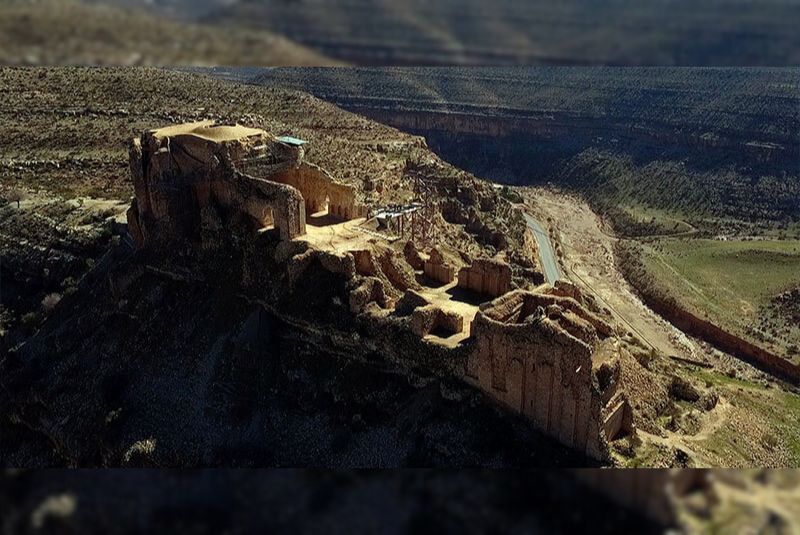
Qal'eh Dokhtar or Dokhtar Castle, located about 110 kilometers south of Shiraz, stands majestically on a mountainside overlooking the road. The name "Dokhtar Castle" (The Maiden Castle in Firuzabad) is derived from some local beliefs that thought it was dedicated to Anahita, the goddess of water.
It was constructed by Ardashir I to protect the Sassanian capital; the castle served as a formidable fortress until the end of the Parthian era. Despite significant damage over time, its towering walls still reflect the power of the Sassanian rule, making it worth a visit.
Dokhtar Castle covers an area of 2,300 square meters and is built on three terraced levels, accessible via a spiral staircase. From above, the castle appears rectangular with a large, crescent-shaped dome atop a square room, which was likely the ceremonial center of the fortress. Smaller rooms around the tower and the second-floor corridors have suffered serious damage due to pressure from vaulted ceilings.
Interestingly, the castle includes a stone reservoir carved into the mountain to address water needs. An intriguing feature is a cave-like opening believed to be a hidden escape route, used during enemy attacks to connect with the city, ensure food supplies, and bolster defenses.
History of Dokhtar Castle in Firuzabad
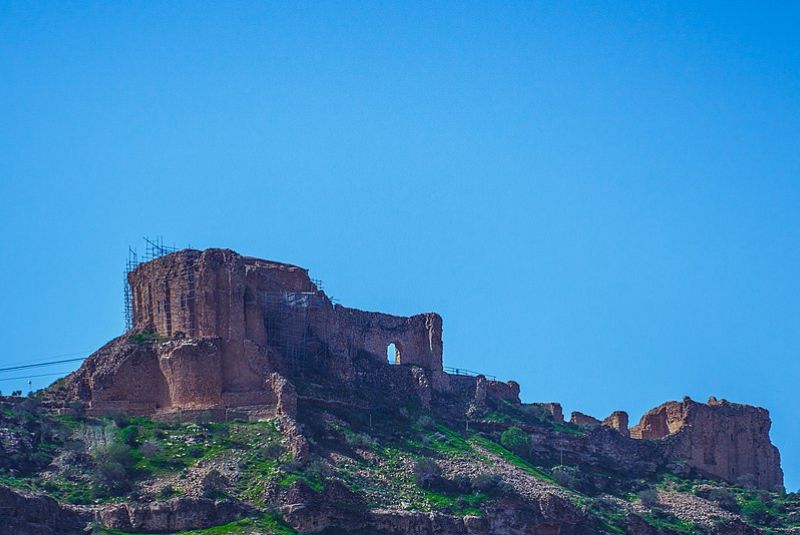
Dokhtar Castle was constructed during the Sassanian period to protect the city of Gur, also known as Ardshir Khore or Firuzabad. Today, the ruins of this ancient city are known as Firuzabad.
Firuzabad was located in a plain with challenging geographic features, making it hard to access. Surrounded by high mountains and rocky terrain, the area provided a natural defense.
Historical records show that long before the Sassanian era, the Achaemenid kings had established a thriving city in this region, fortified with strong walls. During Alexander the Great’s invasion of Iran, he could not penetrate the city and instead diverted the river to flood it.
The city's prominence and reputation declined during the Parthian period, but after Ardshir Babakan's victory over the last Parthian king, Artabanus V, the ancient city of Firuzabad was revived and flourished once again.
Ardshir Babakan, the founder of the Sassanian dynasty, transformed the previously marshy and waterlogged Firuzabad plain into arable land by channeling the Dalaki River to surrounding fields.
He built the city of Gur in a circular layout with a diameter of 1,950 meters. Ardshir constructed a drainage tunnel in the area and established his capital here. The city, known as Ardshir Khore, had a circular plan with four gates, and the royal residence was located at the center of this circle.
Dokhtar Castle, built by Ardshir Babakan, served as a fortress to protect the first Sassanian capital, Ardshir Khore, following his conquests of Kerman and Isfahan. The castle was strategically placed to block enemy access from the Tang-e Ab valley and was completed in 224 AD during Ardshir's conflict with the last Parthian king.
Origin of the Name "Dokhtar Castle"
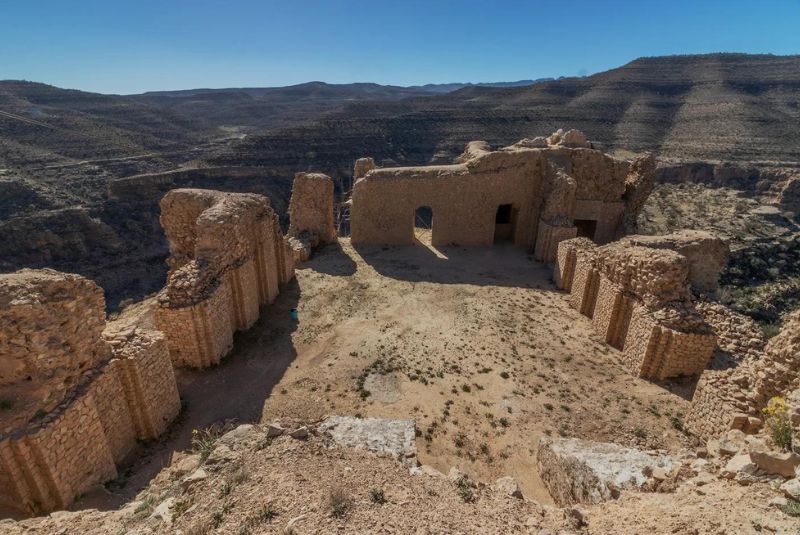
During the Sassanian period, the worship of Anahita, the Zoroastrian goddess of water, was widespread. Anahita symbolized purity and was often represented as an innocent and noble maiden.
Historical research indicates that Ardshir Babakan's grandfather was a prominent priest at Anahita's temple in the ancient city of Darabgerd, and later, Shapur Sassanian also managed the temple.
The name "Dokhtar," meaning "daughter," is believed to be connected to the reverence for Anahita. The castle’s difficult access and its seemingly unreachable nature may be reminiscent of the goddess’s attributes of purity, inaccessibility, and invincibility.
Architecture of Dokhtar Castle in Firuzabad
Dokhtar Castle, with its extensive area of over 2,000 square meters, stretches from the lower reaches of the Tang-e Ab valley to the highest point of the surrounding mountain.
The main structure of the castle is located at the highest elevation of the mountain and is constructed with materials like plaster and rubble stone. The castle's defensive walls follow the natural undulations of the mountain, positioned on steep rock faces. This defensive belt appears to have reached a height of about 6 to 7 meters.
Defensive Features
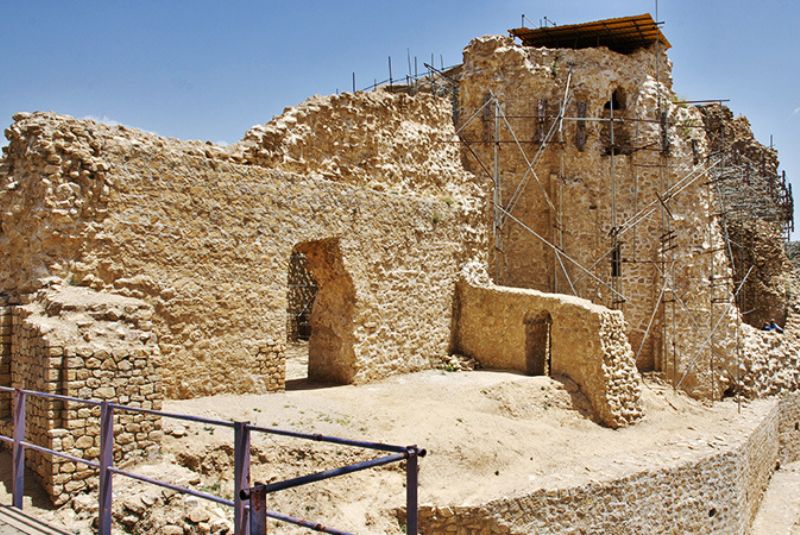
Dokhtar Castle was virtually impregnable from three sides—north, west, and south—due to its enclosure by high mountain rocks. To the east, about a kilometer away, remnants of a solid stone wall can be seen, which also helped to prevent infiltration from this side.
Watchtowers were strategically placed on the surrounding rocks to protect the central structure. The only entrance to the fortress was a staircase on the southern side of the castle, which still stands today.
Hidden Passageways
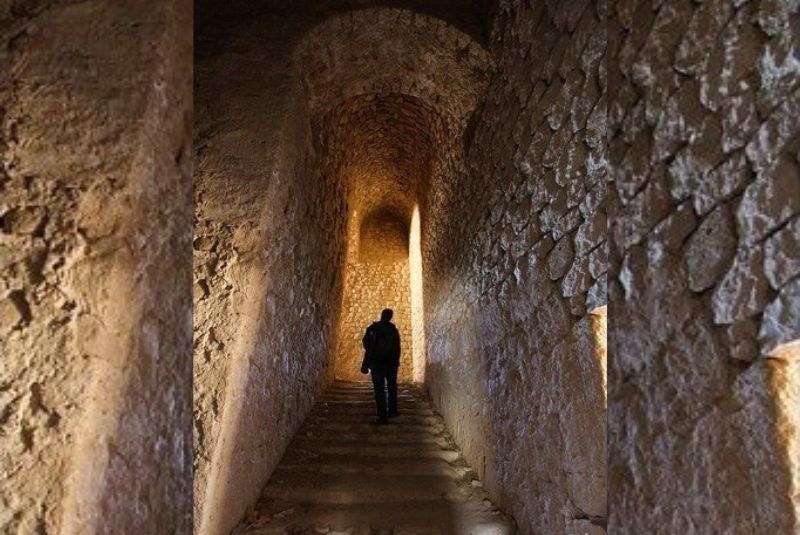
Within the castle, there is an opening that has been identified as a hidden passage to the ancient city of Ardshir Khore (modern-day Gur). This route was used in the past to transport personnel and supplies to the castle during enemy attacks.
Main Structure of the Castle
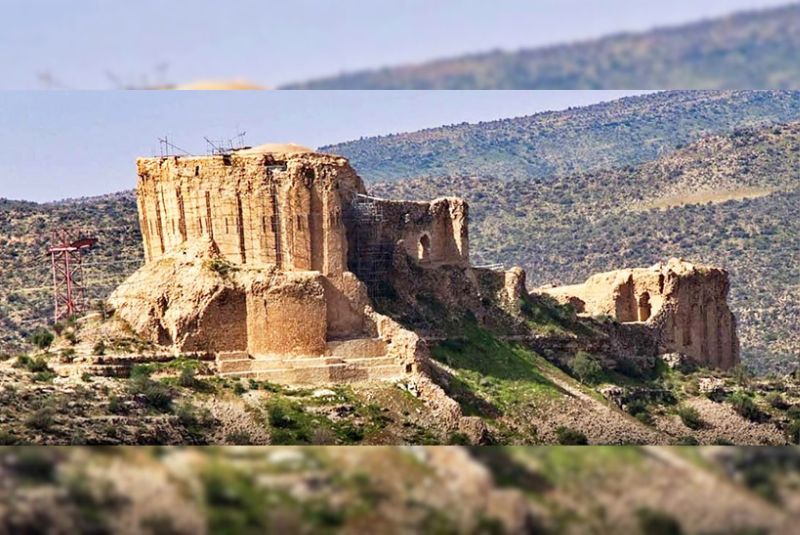
The main building of Dokhtar Castle, serving as the residential and royal section, is designed in three levels with a tiered structure. This rectangular building measures 120 meters in length and 40 meters in width.
Each of these three sections has unique architectural features and is connected by a spiral staircase. At the highest point of the palace, remnants of a grand portico and a hall with an existing dome can be observed.
Defensive Walls
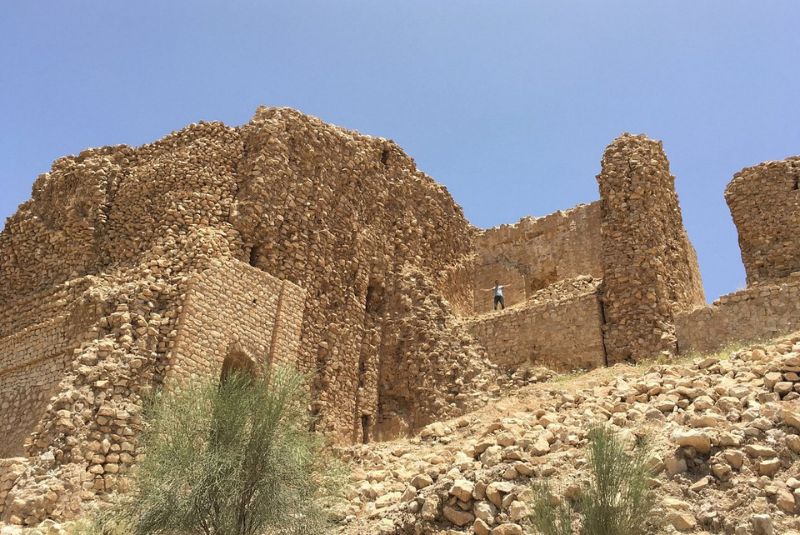
Some of the castle’s walls, extending from the rocks towards the river, appear to have been constructed to protect the road passing by the castle. The outer walls, like the castle walls, are adorned with plasterwork and shallow vertical indentations, similar to the decoration found at Persepolis.
Main Sections of the Castle
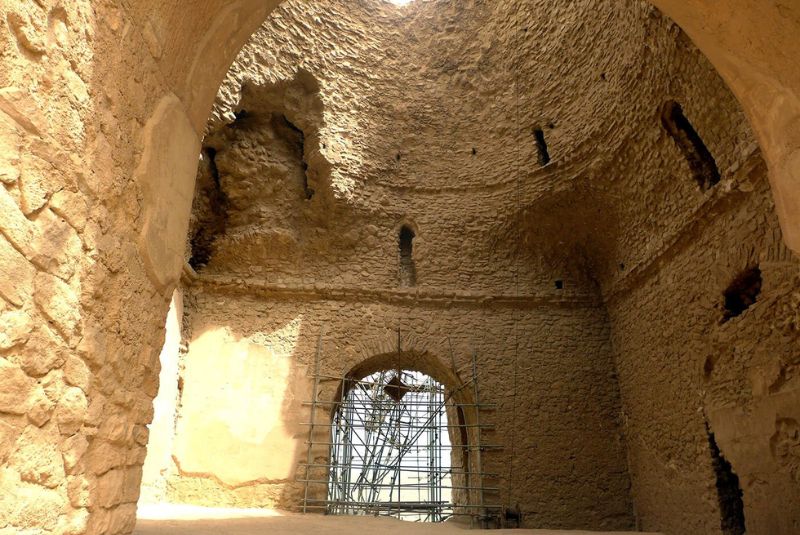
Dokhtar Castle comprises several sections including a hall, portico, nested rooms, a watchtower, corridors, a water reservoir, a central courtyard, and a spiral staircase. It was initially studied by Swiss researchers and UNESCO, and later, it was restored by the Cultural Heritage Organization due to severe damage from earthquakes. Unfortunately, much of the castle’s rooms, corridors, and walls have deteriorated over time, suffering from significant damage.
The Lowest Level of the Palace
The lowest level of Dokhtar Castle, which also serves as the entrance to the palace, is located in the southwest corner. This area leads to a hall with platforms on both sides of the entrance.
At the end of this hall, there is a bench with five semicircular seats, decorated with armrests. On the right side of the hall, a door leads to a spiral staircase connecting to the central platform of the palace.
First Floor of the Palace
On the first floor of the palace, there are several towers positioned in different directions for guard duties. These towers include spaces for archery. Additionally, the first level features a water reservoir and two hidden wells, which are remarkable feats of engineering given the era's construction capabilities.
Middle Floor of the Palace
The middle floor of Dokhtar Castle, or the central building, features a central courtyard surrounded by halls. These halls have vaulted ceilings and some include short side platforms accessible via stairs.
One of these halls includes facilities for cooking. On the eastern side of the central courtyard, there is a platform with a staircase passing through it, leading to the highest level of the castle. This staircase has an arched ceiling.
Highest Level of the Palace
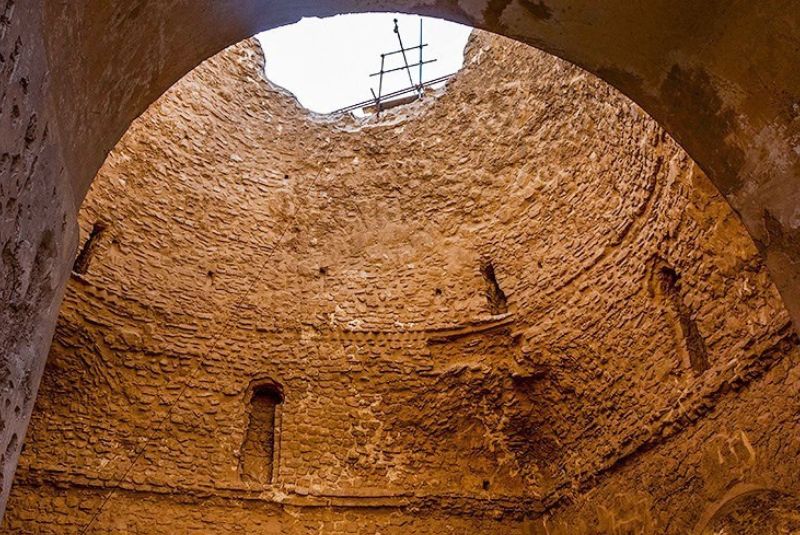
The highest part of the palace includes a deep portico and a hall topped with a dome. This area seems to have been the royal residence, with only the walls of the portico and part of the dome remaining. The hall, measuring 196 square meters with an 18-meter height, is surrounded on three sides by rectangular halls with rounded outer walls.
Dome Architecture
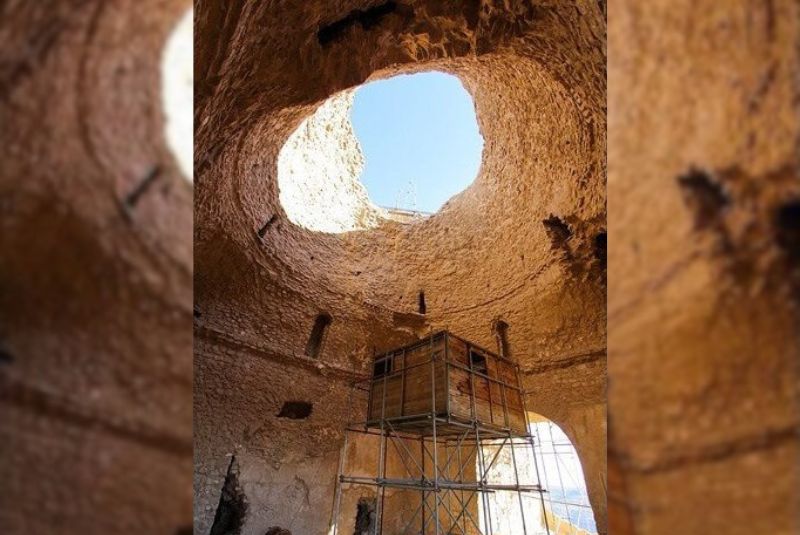
The dome of Dokhtar Castle is designed using a special architectural technique known as “three-cornered” or “filigree.” While Roman architects used other techniques to place domes on square buildings, the castle employs a method of corner-filling to transition from square or rectangular sections to a circular dome. This technique creates an elliptical cross-section and facilitates the formation of a round dome.
Bathhouse near the Castle
Near the eastern wall of Dokhtar Castle is a space known as “Hamamk,” believed to have been a royal bathhouse. It maintains a consistent temperature of about 30 degrees Celsius year-round. Despite the limited remains, it is evident that this space always had water and remained humid.
Best Time to Visit Dokhtar Castle
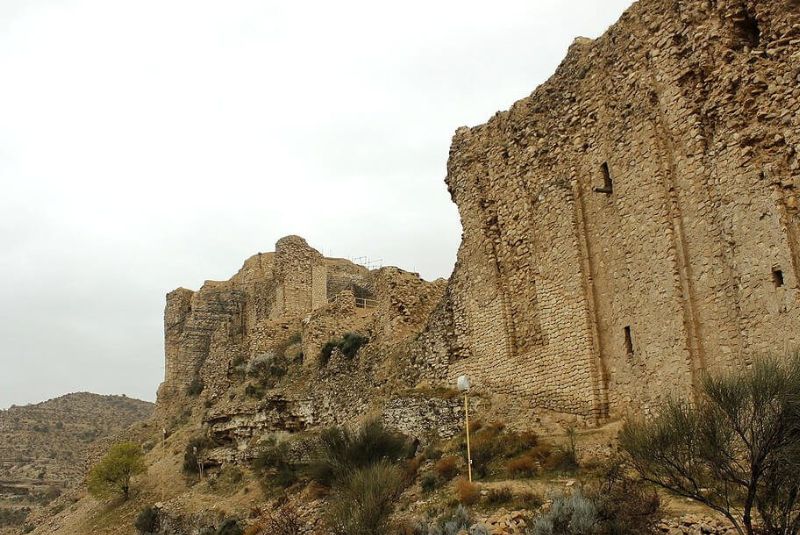
Firuzabad's climate features hot summers and cold, dry winters. With minimal rainfall, the ideal time to visit Dokhtar Castle is during the spring when the weather is mild and pleasant. Early morning visits are recommended to enjoy the daylight and avoid the afternoon heat.
Since the castle is situated on a hillside, bring essentials for a regular hike, such as plenty of water, appropriate footwear, a sun hat, sunglasses, and sunscreen. The path to the castle is dusty and rocky but not overly challenging, so specialized equipment is not necessary.
Location and Access of Dokhtar Castle
Dokhtar Castle is situated in Firuzabad, Fars Province, approximately 110 kilometers south of Shiraz. The castle, dating back to the early 3rd century AD, is located to the north of Firuzabad on the slopes of a mountain overlooking the Shiraz-Firuzabad road.
Dokhtar Castle is prominently situated on a hillside overlooking the road from Firuzabad to Kovar. The castle's location offers breathtaking views and is surrounded by lush landscapes and rugged mountains. The area around the castle includes natural attractions such as the Tang-e Ab valley and nearby dams and tunnels, adding to the scenic drive.
How to Get There
To access Dokhtar Castle, start by getting to Shiraz. Once in Shiraz, head towards the airport. After passing the airport, you'll reach the village of Fasa, then take a route towards Kovar. From Kovar, drive 90 kilometers to reach this pristine and picturesque part of Shiraz.
As you journey through this scenic region, you'll encounter green plains surrounded by towering mountains. After passing through the Tang-e Ab tunnel and a sharp turn, you’ll arrive at the cable car station. Here, you can park your car next to the station, which is conveniently located near restrooms.
From the station, you can see Dokhtar Castle shimmering like an agate stone in the sunlight. If luck is on your side and the cable car is operational, you can use it to reach the castle. However, during off-peak seasons, the cable car may not be running.
In such cases, prepare for a thrilling climb up the spiral staircase that leads to the castle’s entrance. The steep, rocky path to the castle is designed in three levels, leading up to the main courtyard of the castle.
Tourist Attractions Near Dokhtar Castle
Rock Carvings of Tang-e Ab
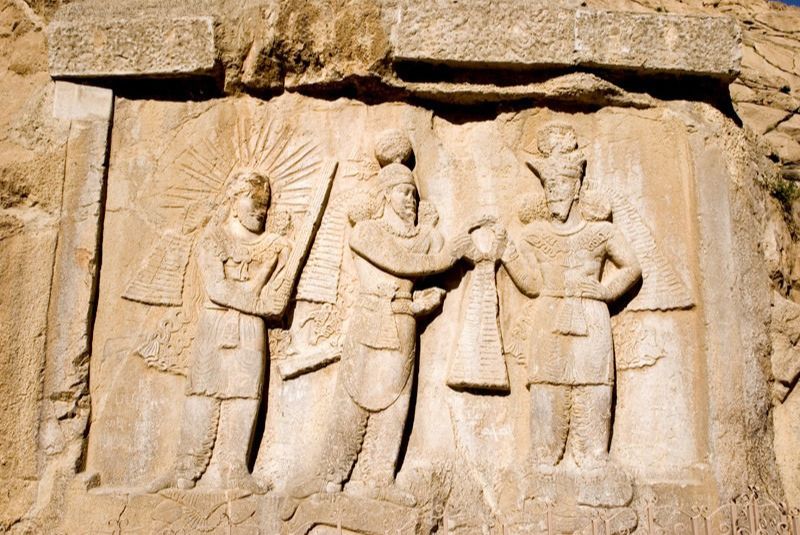
The tradition of rock carving in the Sassanian era began with the coronation of Ardashir I and continued through the reign of Khosrow Parviz. In Tangab Valley, two significant carvings are located less than a kilometer apart.
The first depicts Ardashir I’s coronation, where he stands before Ahura Mazda, with Shapur and other princes behind him. The second carving portrays Ardashir’s victory over Artabanus V, featuring a dramatic battle scene. This carving is among the largest in Iranian art history.
Mehr Narseh Bridge
Constructed under the command of the Sassanian minister Mehr Narseh, this bridge exemplifies Sassanian architecture from the 5th century. It connected the Firuzabad plain to Ardashir Khoreh.
The bridge’s central section is built of gravel and plaster, with stone blocks covering its exterior. Nearby, a Pahlavi inscription honors Mehr Narseh for building the bridge for his peace of mind and at his own expense. Sadly, the bridge now lies neglected at the bottom of the Tangab River.
Ancient City of Gor
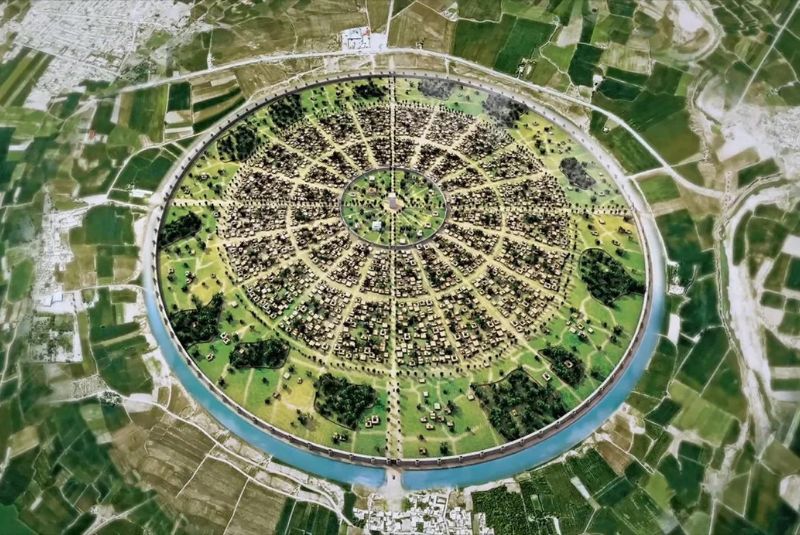
The ancient city of Firuzabad, known historically as Gor, is a significant Sassanian-era site. Ardashir I transformed the marshy Firuzabad plain into arable land and built the city in a circular layout with a diameter of 1,950 meters.
The city had a central stronghold and was surrounded by defensive walls and a moat. It was divided into 20 sections by streets radiating from the center, reflecting the hierarchical structure of Sassanian society.
Ardashir I Palace (Firuzabad Fire Temple)
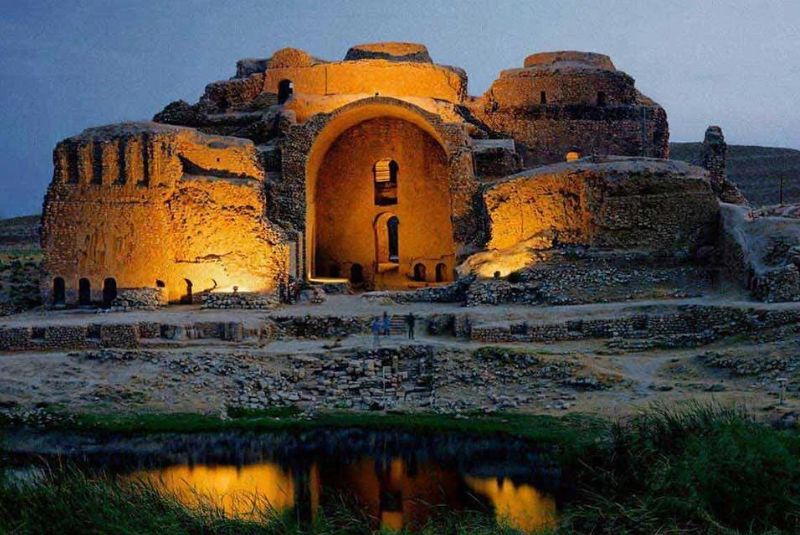
The Palace of Ardashir I is the second largest and most impressive structure in the Firuzabad plain, sometimes referred to locally as a fire temple. The architecture, featuring a symmetrical design with public reception areas, an arcade, and side rooms, is similar to that of Dokhtar Castle.
The palace is notable for its use of reflections in water, aligned with Sassanian architectural practices. It covers an area of approximately 8,500 square meters and includes domed spaces with barrel-vaulted halls.
Bottom Line
Dokhtar Castle in Firuzabad is a UNESCO heritage Sassanid fortress that was built by Ardashir I to protect the empire's first capital. Featuring a multi-level design, the castle's imposing walls and intricate architecture offer a glimpse into its historic significance.
Despite the ravages of time and earthquakes, the castle remains a captivating site, complemented by nearby Sassanian rock carvings, the Mehr Narseh Bridge, and the ancient city of Gor. Its blend of historical richness and architectural marvels makes the Maiden Castle in Firuzabad a must-visit for history enthusiasts and travelers alike.
Share your story!
Comment below and let us know about your Experience.
Your story inspires others!


Comment
Leave a Comment